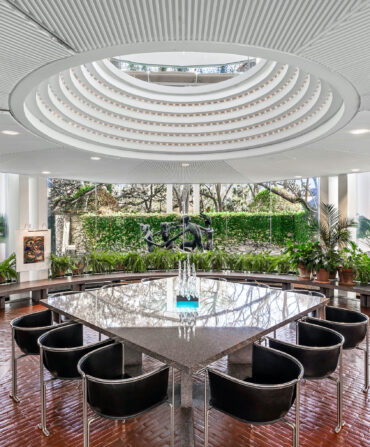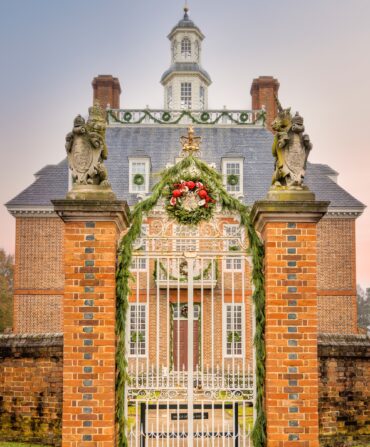Homeplace
Artist in Residence: Beatrix Ost’s Virginia Estate
At this fairy-tale home, magic awaits behind every door

Photo: PAUL WHICHELOE
Beatrix Ost has lived many lives. The seventy-seven-year-old Virginia resident’s grand and evocative paintings and sculptures have been exhibited all over the world, and she’s also been a screenwriter, a model, and an actress. She’s published several big, beautiful books; her most recent, The Philosopher’s Style, is a compendium of her photographs, paintings, bons mots, and stories. She designs jewelry, and other artists and designers have made her their muse, for years. But she has become best known for being Beatrix, for how she looks, the clothes she wears, the way she conducts herself in the world—in other words, her style, her very way of being. For better or worse, she has become her art, and the rest of it—her painting, design, sculpture, and writing—orbits her like many smaller moons.
The first time I met her was in September. Fall had just arrived, and she was sitting on a bench outside of Estouteville, the home she’s lived in for the last thirty-five years, applying a fresh coat of bright red lipstick. She wore a straw-yellow turban; beneath it I could see wisps of her violet hair. She draped a dark shawl over her shoulders. Her blouse was ivory lace, and her skirt, black, reached almost all the way to the grassy drive—her look is often a cunning combination of both vintage and designer pieces. Pearled and golden rings decorated her fingers, and she wore a necklace she designed, made from bomb scrap metal by Laotian artists with an engraving that reads, “In your body is a good place to be.”
The aphorism is appended to all of her emails as well.
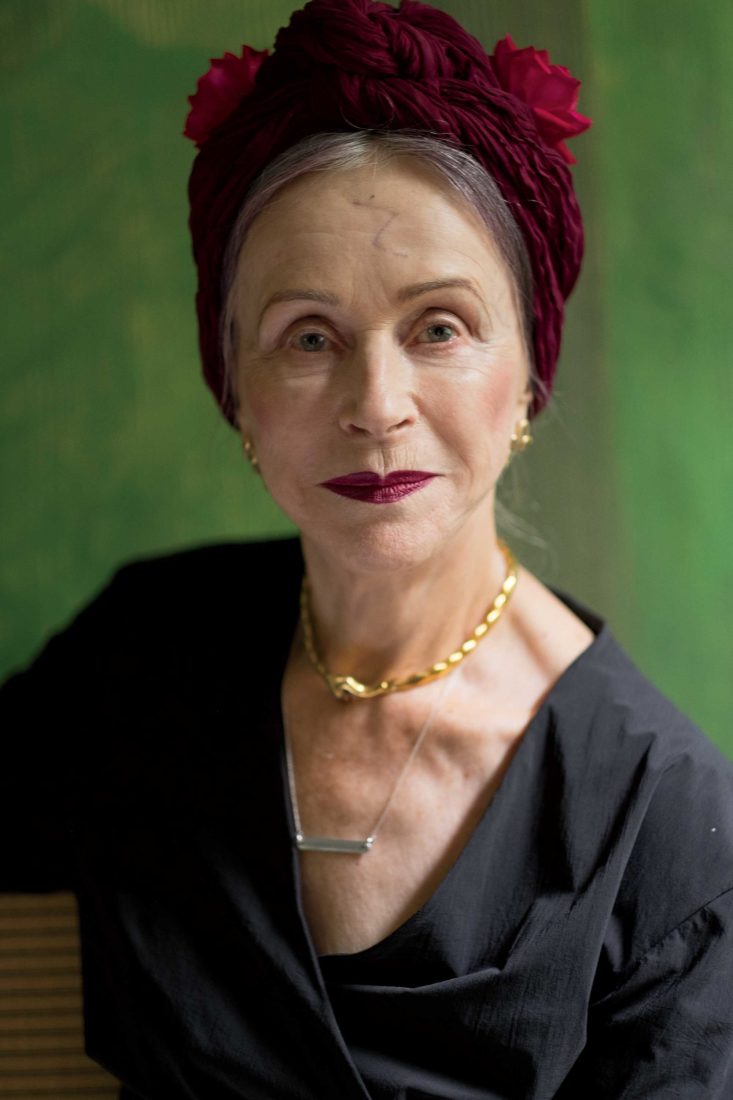
Photo: PAUL WHICHELOE
Beatrix Ost.
I drove from Chapel Hill, North Carolina, to Estouteville to see her, and though it’s three hours away, a half hour or so from Charlottesville, I made it there exactly when she had asked for me: 3:00 p.m. Neither of us could believe it. “You knew you were coming to see a very punctual German woman,” she said, and smiled warmly.
She pointed to a huge wooden structure that looked like a tree house, but without the tree. “Shall we talk up there?”
Scattered all around the estate are homemade pieces like this, made of sticks and vines and slats of wood found on the property, built by the farmers and gardeners who take care of the place. Benches, gazebos, little altars. Almost everyone who works at Estouteville eventually becomes an artist of some kind, which Ost encourages; but the inclination is also something that might arise naturally from time spent immersed in the beauty and history of this place.
We made our way to the top of the structure, brushing away the leggy stems of a wild rosebush, where we had a gorgeous view of the house. The building of Estouteville began in 1827, in what you would call Palladian, Roman Revival, or Jeffersonian style, or perhaps all three. James Dinsmore, Thomas Jefferson’s master carpenter, who helped him construct Monticello and the University of Virginia, designed the home. Made of brick, wood, and stucco, Estouteville from the outside could not be statelier, or more serious, or more awesome. But giant Tuscan porticoes always have that effect on me.
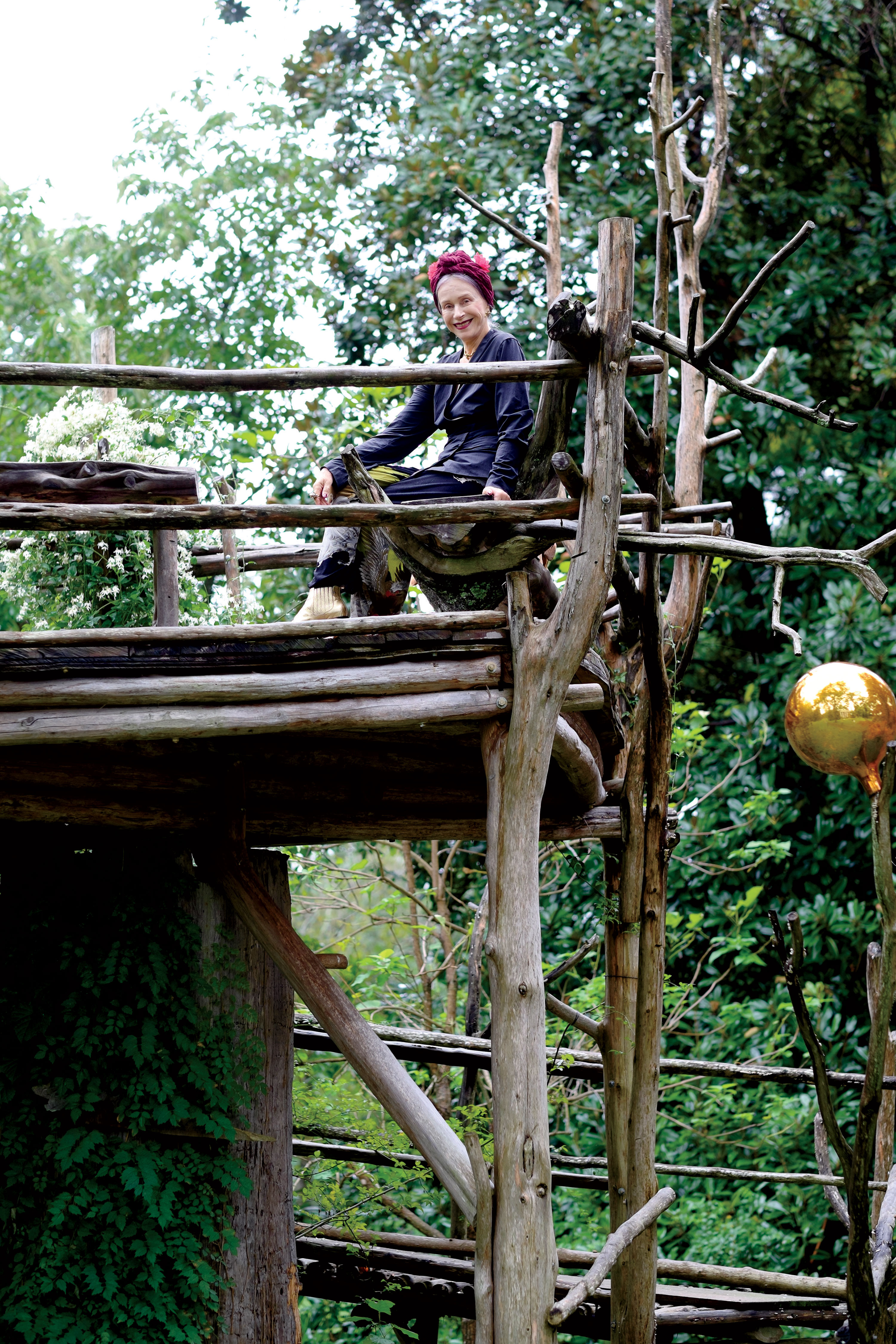
Photo: PAUL WHICHELOE
The treeless “tree house” at Estouteville.
Ost and I sat there and talked about various kinds of magic for a while, because magic is what brought her and her husband, Ludwig Kuttner, here.
“We had a house on the Hudson, in New York, but it burned down,” she said. “To find a new home, we held a pendulum above a map of America and let it swing and swing, and it came to rest on this area of Virginia. Sothe-by’s took us to some other houses, but when we came here, we knew this was the place.”
BONUS PHOTOS: Click to see more images from this story
After years creating art and acting in her native Germany, Ost came to New York City with Kuttner in 1975 “for fun,” she has said, and they loved it so much they moved there. She was a part of the thriving eighties art explosion but never felt entirely accepted by the scene: A flamboyant young European woman with the charming but somewhat aristocratic mien of a dispossessed heiress did not fit in with the urban edge in vogue in New York at the time. In 1982, they moved to Estouteville, the seat of her expression ever since.
From our perch in this treeless tree house, I could see that Beatrix touch: the bronze sculptures standing on
the lawn, the marble orbs, and the trunks of dead oaks painted bright green, blue, and red. “When trees die, we paint them,” she said. “But the one we painted green, after we painted that one, it came back to life.” She shrugged. Behind us wound a hedge maze she designed herself.
A small village of outbuildings also surrounds the main house. The hay barn has been repurposed as an office; the former slave quarters, a guesthouse. Estouteville was a stop on the Underground Railroad. When Ost and Kuttner fixed it up, they found a secret space beneath the house where people on their way to freedom would hide.
The sun took an angle on us, and we headed inside. “I’ll make us some tea,” she said, and left me alone in the Great Hall. I feel certain now that this was her plan, allowing me a few minutes alone to absorb everything around me, this new world I’d been welcomed into, which was unlike any I’d been in before. Ost and Kuttner spent years repairing and refurbishing Estouteville but changed none of its architecture: Everything there is original to the house, including the haunting bucrania—a frieze of ox skulls, dozens of them—that line the metope. But there is no place your eye can rest without seeing something astonishing, beautiful, or engaging, much of the astonishment created by Ost herself. Surrealistic paintings, heads made of wax, fiber sculptures, a collection of pewter, wooden hands. Everything in it could be in a museum, but being there doesn’t feel like being in a museum: It feels like I’ve walked into the dream of someone dreaming about a museum.
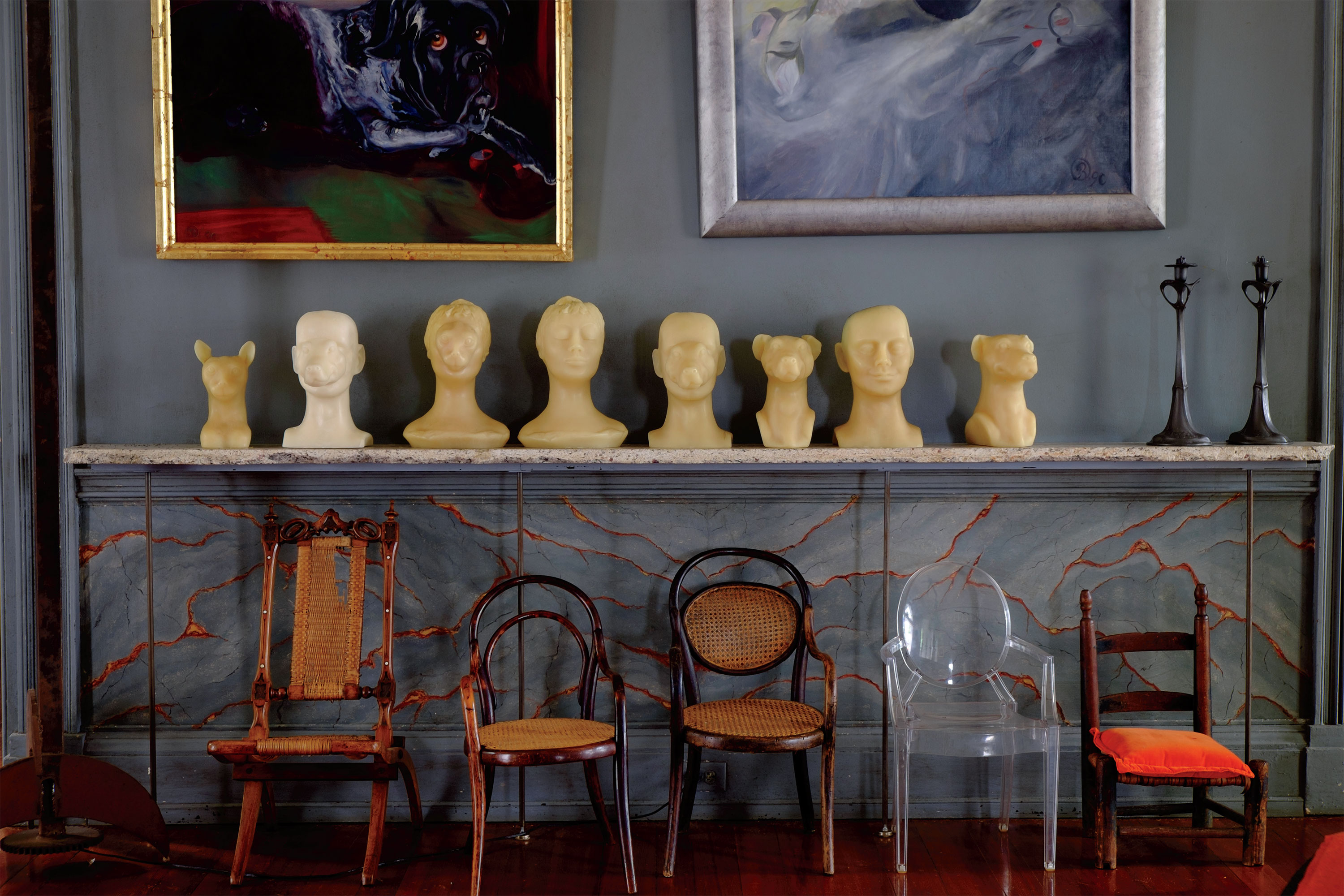
Photo: PAUL WHICHELOE
Wax candle busts by Ost in the Great Hall. “When they flicker,” she says, “their heads look eerily alive.”
She brought back some tea, and we sat in the Great Hall and talked about Estouteville, where she has lived for almost half of her life. She loves this house, the history of it and the myth of their arrival. And she’s drawn to its symmetries: The rooms off the Great Hall are identical in size but filled with different and wondrous objets, glass owls and crystal balls, gifts from friends, from other artists, mementos from a peripatetic life—a vast, exotic, and haphazard collection.
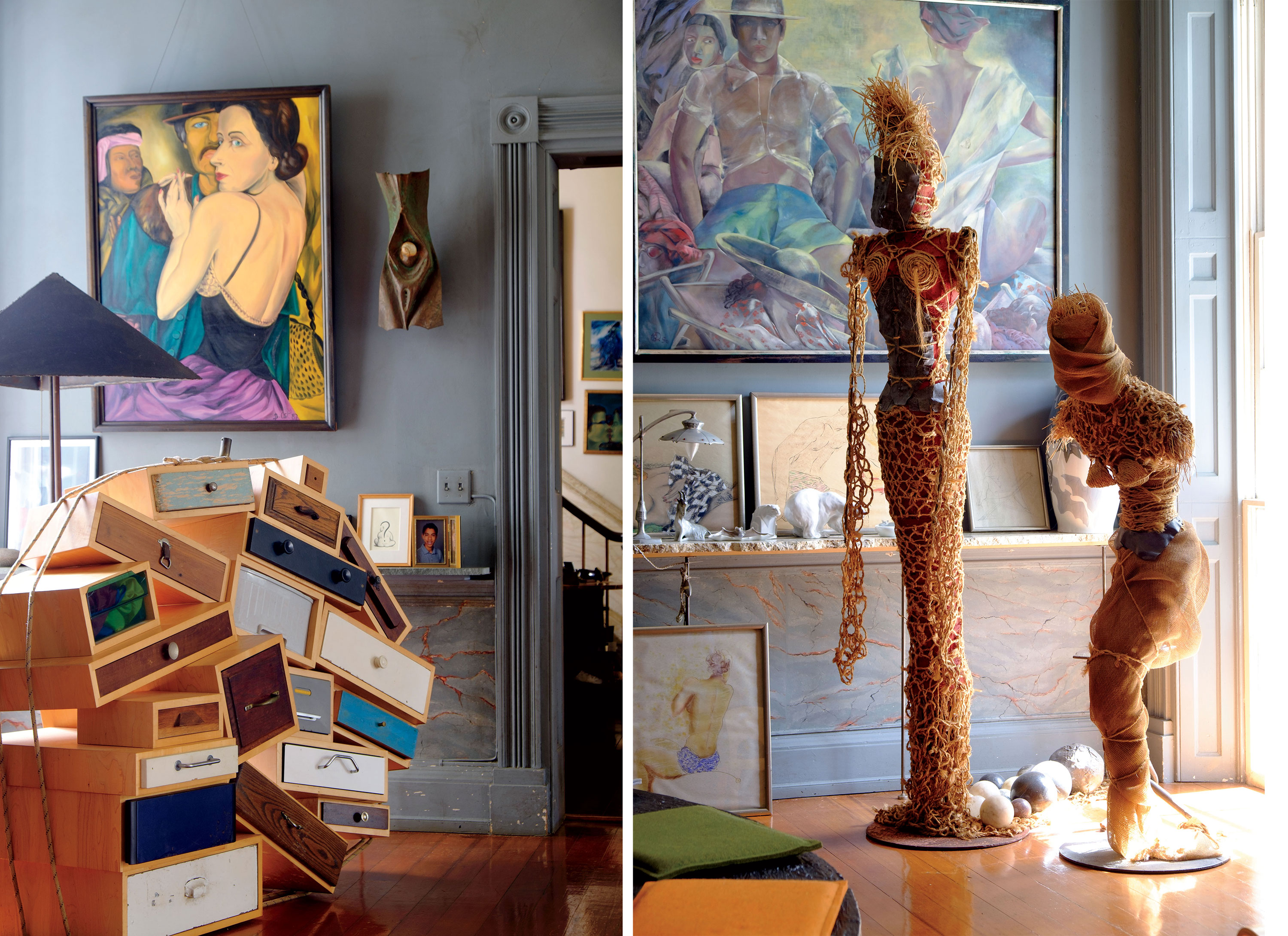
Photo: PAUL WHICHELOE
Beatrix Ost’s collections, art.
“The rooms are like a Rorschach test,” she said. But the charm also lies in how the house flows from the inside out, the outside in, with porticoes in the back and the front, one for watching the sun rise, the other for watching it set. The pool, one of the many improvements she and Kuttner brought to the estate, looks like a giant’s teardrop, and she uses it almost every day. She told me she always has a deep sense of wonder and surprise at being where she is, in this house, surrounded by hundreds and hundreds of Virginia acres. “It is a gift to me.”

Photo: PAUL WHICHELOE
The breathtaking swimming pool.
Architecture, art, and magic. What else is there? Numbers. We talked about numbers, too. The number seven is an important one, because things seem to happen to her in sevens. She had a vision of her seven-year-old self recently, and the girl said, “Remember when you were seven? You knew everything.” She found love for the first time at fourteen. It goes on like that for her. This year—2017—she’s seventy-seven, so it was bound to be, if not a good year, at least an important one, an interesting one. She even found a pied-à-terre in Charlottesville she’s begun fixing up, for when she doesn’t want to come back to the too-quiet country after a night on the town. She is a vital woman, and, who knows, possibly immortal. “I feel like I’m entering the next third of my life,” she said.
And then there’s this: “I like the dreams of the future better than the history of the past.”
She could have said that, but she didn’t: Thomas Jefferson did. He would have loved her.


